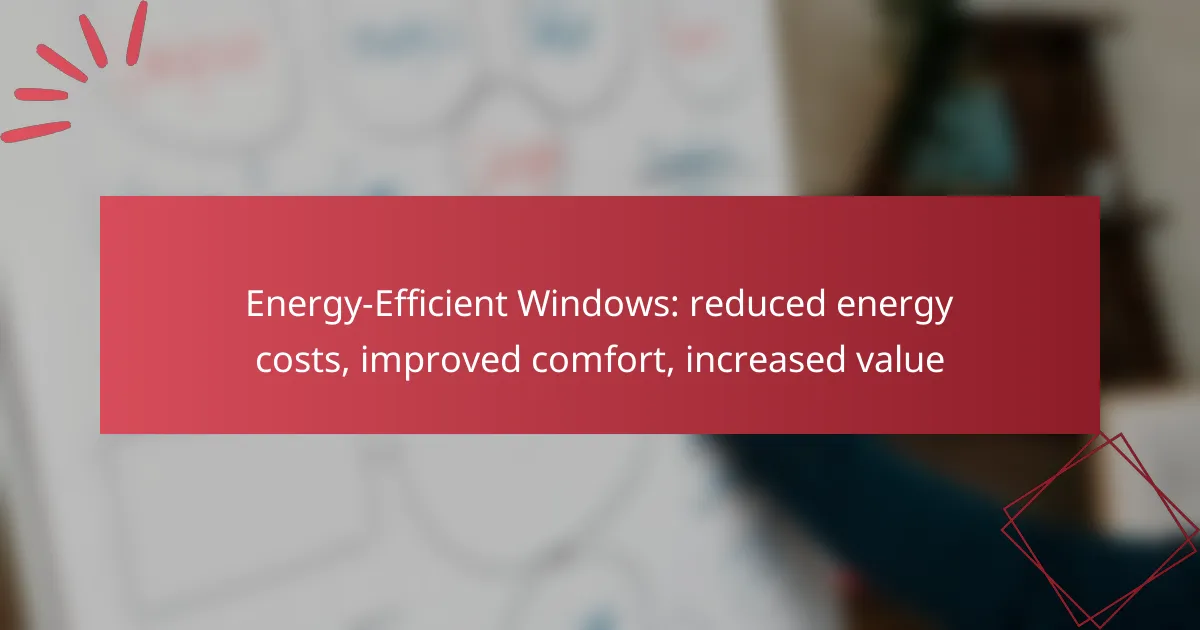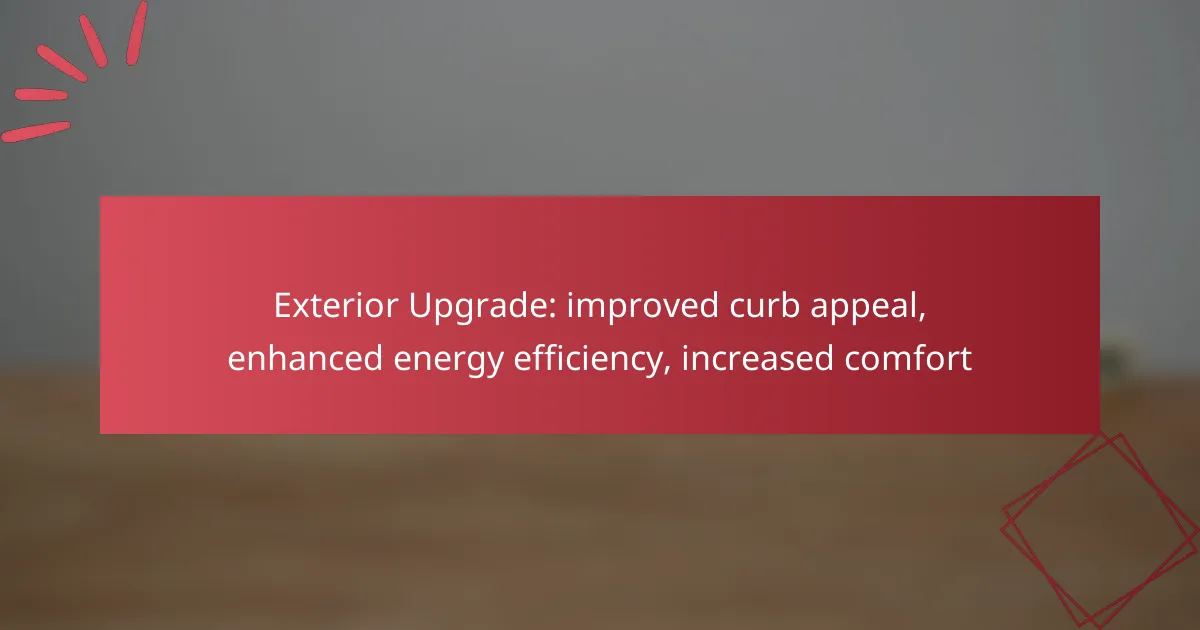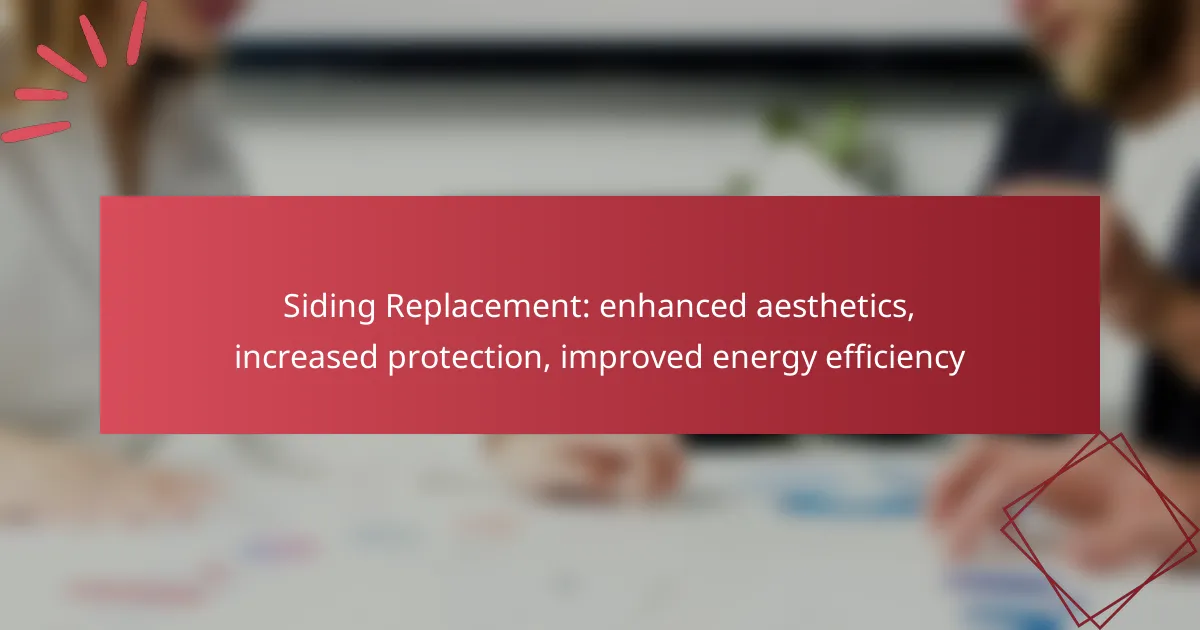Energy-efficient windows are a smart investment for homeowners, as they significantly reduce energy costs by minimizing heat transfer and maintaining comfortable indoor temperatures. These windows not only enhance comfort by eliminating drafts and reducing external noise but also increase property value, making homes more attractive to potential buyers. By adopting advanced materials and technologies, energy-efficient windows offer long-term savings and a more pleasant living environment.
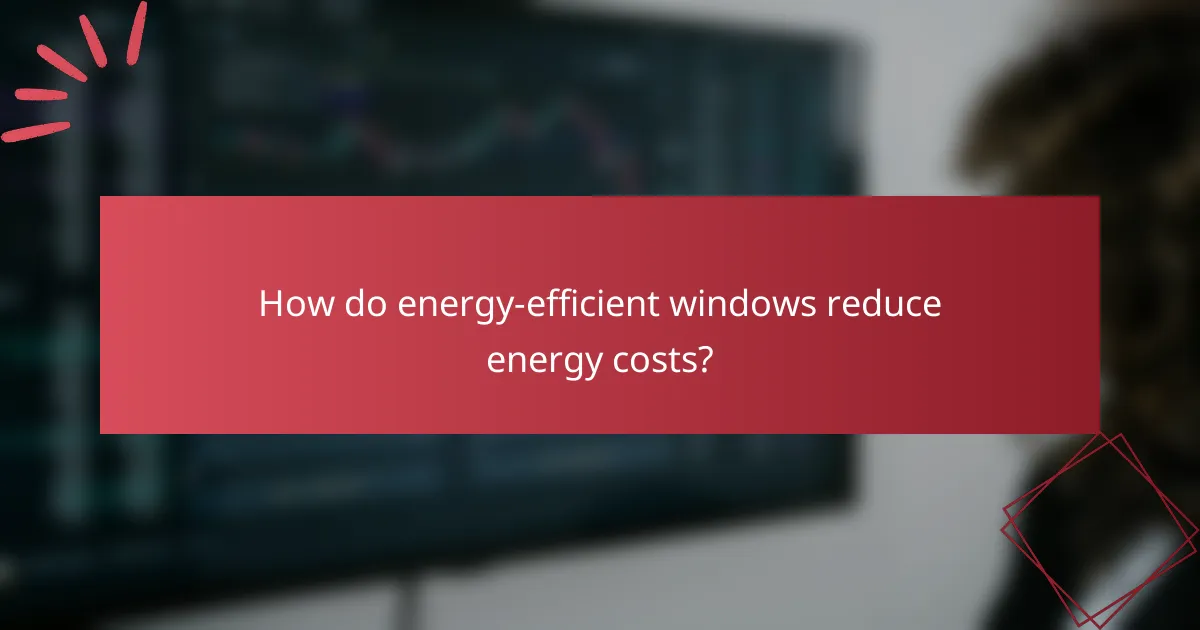
How do energy-efficient windows reduce energy costs?
Energy-efficient windows lower energy costs by minimizing heat transfer, which helps maintain comfortable indoor temperatures. By reducing the need for heating and cooling, these windows can lead to significant savings on utility bills over time.
Lower heating and cooling expenses
Energy-efficient windows can significantly lower heating and cooling expenses by preventing heat loss in winter and keeping heat out in summer. Homeowners can expect savings of around 10-25% on their energy bills, depending on their climate and existing window quality.
For example, replacing single-pane windows with double or triple-pane options can lead to noticeable reductions in energy costs. Additionally, low-emissivity (Low-E) coatings can further enhance performance by reflecting heat back into the room during colder months.
Enhanced insulation properties
Energy-efficient windows feature advanced insulation properties that help maintain a stable indoor temperature. These windows often incorporate multiple panes of glass, argon or krypton gas fills, and insulated frames, which work together to reduce thermal transfer.
When choosing windows, look for those with a high R-value, which indicates better insulation. A higher R-value means improved energy efficiency, leading to reduced heating and cooling needs.
Reduced reliance on HVAC systems
By improving insulation and minimizing heat transfer, energy-efficient windows reduce reliance on heating, ventilation, and air conditioning (HVAC) systems. This not only lowers energy costs but also extends the lifespan of HVAC equipment due to less frequent use.
Homeowners can benefit from a more comfortable living environment while decreasing their carbon footprint. Regular maintenance and proper sealing of windows can further enhance their energy-saving capabilities, ensuring optimal performance over time.
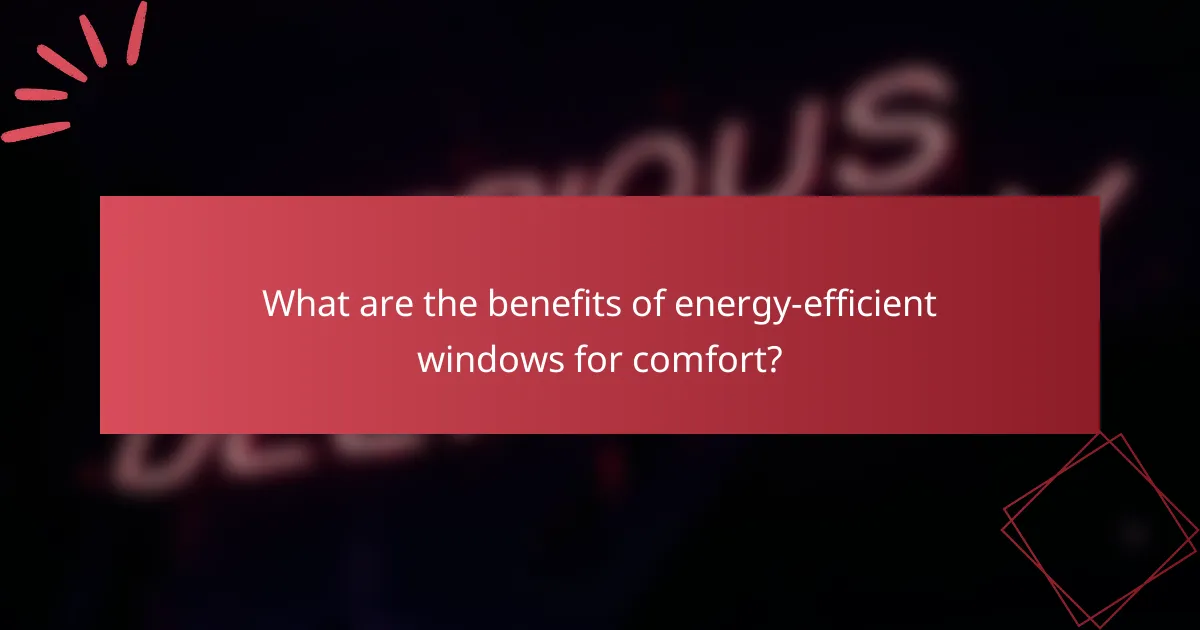
What are the benefits of energy-efficient windows for comfort?
Energy-efficient windows significantly enhance comfort by maintaining a consistent indoor temperature, reducing external noise, and eliminating drafts. These windows utilize advanced materials and technologies to create a more pleasant living environment throughout the year.
Improved indoor temperature stability
Energy-efficient windows help maintain a stable indoor temperature by minimizing heat transfer. They often feature double or triple glazing, low-emissivity (Low-E) coatings, and insulated frames, which collectively reduce heat loss in winter and keep interiors cool in summer.
For example, homes with energy-efficient windows can experience temperature variations of only a few degrees compared to those with standard windows, leading to a more comfortable living space year-round.
Reduced noise pollution
These windows are designed to dampen outside noise, making your home quieter and more serene. The multiple layers of glass and specialized seals work together to block sound waves, which is particularly beneficial in urban areas or near busy roads.
By installing energy-efficient windows, homeowners can expect a noticeable reduction in noise levels, often achieving a sound reduction of 20-30 decibels, which can significantly enhance relaxation and focus indoors.
Minimized drafts and cold spots
Energy-efficient windows effectively seal against drafts, preventing cold air from entering and warm air from escaping. This is achieved through high-quality weather stripping and insulated frames that create a tight seal around the window edges.
By minimizing drafts, these windows eliminate cold spots in your home, ensuring a more uniform temperature. Homeowners should check for any gaps or wear in existing windows and consider upgrading to energy-efficient options to enhance comfort and energy savings.
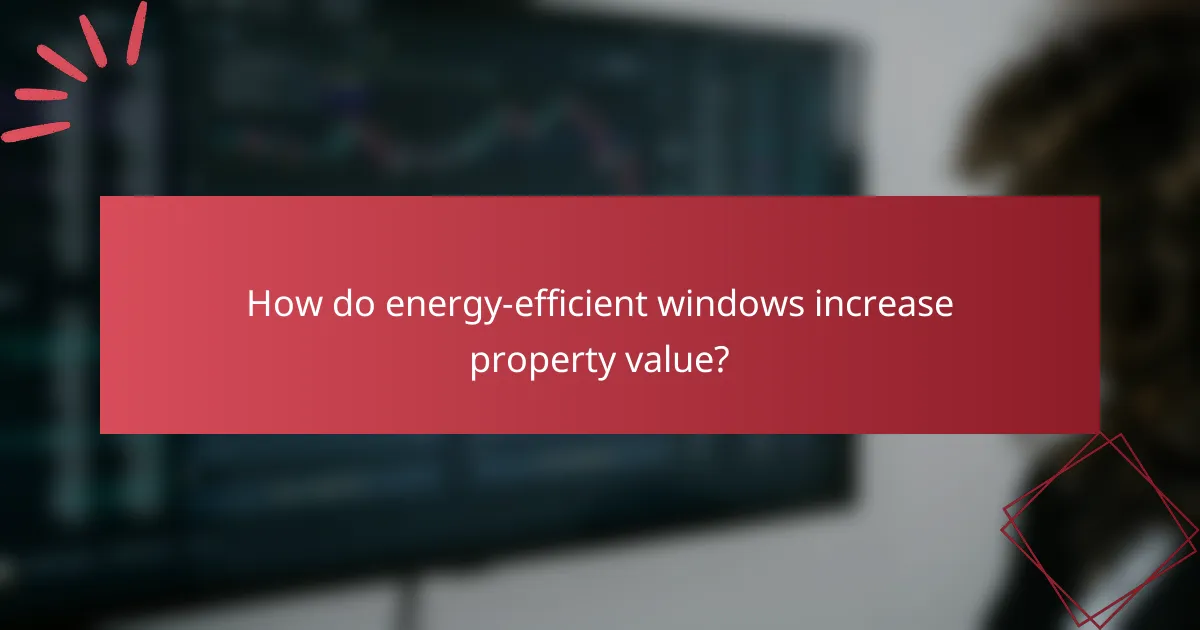
How do energy-efficient windows increase property value?
Energy-efficient windows can significantly enhance property value by lowering energy costs and improving overall comfort. Homebuyers often recognize the long-term savings and benefits associated with these windows, making properties equipped with them more appealing.
Higher resale value
Homes with energy-efficient windows typically command higher resale prices compared to those without. Buyers are willing to pay a premium for properties that promise reduced energy bills and increased comfort. In many markets, this can translate to a price increase of several percentage points, depending on local demand and energy costs.
Investing in energy-efficient windows can yield a return on investment (ROI) of around 70% to 80% when selling the home. This means that the initial cost of installation can be largely recouped through the sale price.
Attractiveness to eco-conscious buyers
As environmental awareness grows, many buyers prioritize eco-friendly features in their home search. Energy-efficient windows appeal to this demographic by reducing carbon footprints and promoting sustainable living. Properties that highlight these features often attract more interest and can sell faster.
Marketing a home with energy-efficient windows as environmentally friendly can differentiate it in a competitive market. This appeal can be particularly strong in urban areas where sustainability is a key concern for many buyers.
Compliance with energy efficiency standards
Energy-efficient windows often meet or exceed local energy efficiency standards, which can be a selling point for potential buyers. Compliance with regulations such as ENERGY STAR in the U.S. or similar standards in Europe can enhance a property’s marketability.
Homeowners should ensure that their windows are certified and properly documented to showcase compliance. This not only improves property value but also provides peace of mind to buyers regarding the quality and efficiency of their investment.

What factors should be considered when choosing energy-efficient windows?
When selecting energy-efficient windows, consider factors such as frame materials, glazing options, and Energy Star ratings. Each of these elements plays a crucial role in determining the window’s insulation properties, durability, and overall energy savings.
Window frame materials
The material of the window frame significantly affects its energy efficiency. Common options include vinyl, wood, aluminum, and fiberglass, each with distinct thermal performance and maintenance needs. For instance, vinyl frames typically offer good insulation and require minimal upkeep, while wood frames provide excellent aesthetics but may need regular maintenance to prevent rot.
When choosing frame materials, consider local climate conditions. In colder regions, materials with better insulation properties, like fiberglass or wood, may be more beneficial, while in milder climates, vinyl could suffice.
Glazing options
Glazing refers to the glass used in windows, which can greatly influence energy efficiency. Double or triple glazing, where two or three panes of glass are separated by insulating gas, can significantly reduce heat transfer. Low-emissivity (Low-E) coatings can further enhance performance by reflecting heat back into the room during winter and blocking UV rays in summer.
When evaluating glazing options, consider the U-factor and Solar Heat Gain Coefficient (SHGC). A lower U-factor indicates better insulation, while an appropriate SHGC can help manage solar heat gain based on your local climate.
Energy Star ratings
Energy Star ratings provide a reliable benchmark for assessing the energy efficiency of windows. Windows that meet Energy Star criteria are tested for their thermal performance and are designed to reduce energy costs. Look for the Energy Star label to ensure the windows have been certified for efficiency in your climate zone.
In the U.S., Energy Star ratings vary by region, so check the specific requirements for your area. This ensures that you select windows that are optimized for local weather conditions, maximizing both comfort and energy savings.
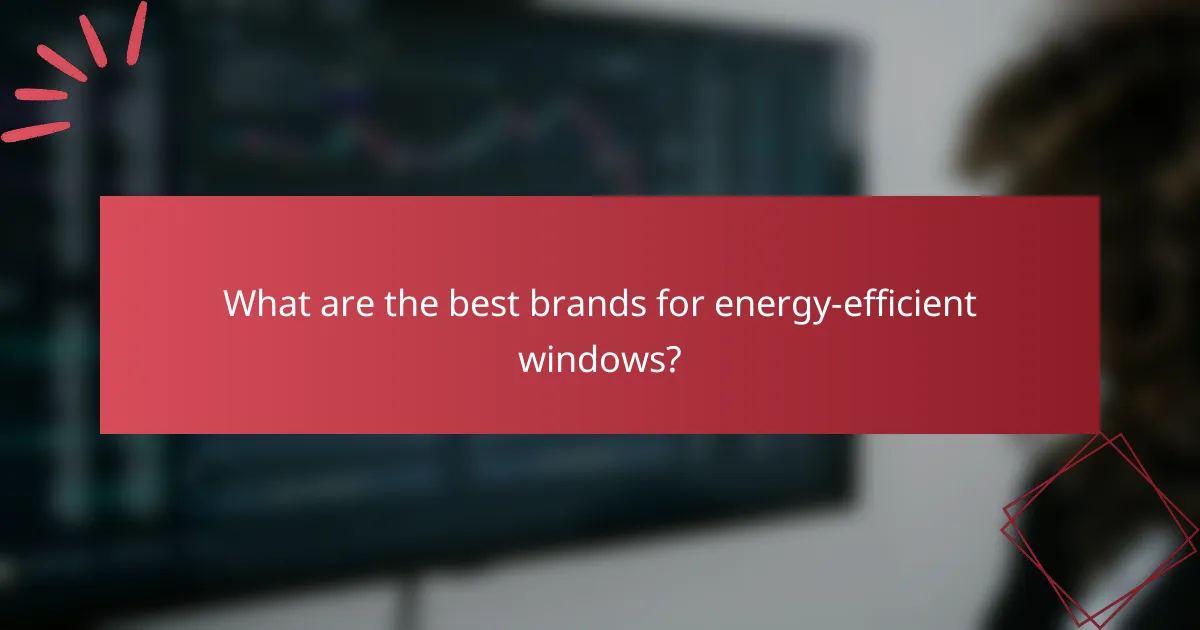
What are the best brands for energy-efficient windows?
The best brands for energy-efficient windows include Andersen and Pella, known for their high-quality materials and innovative designs. These brands focus on reducing energy costs, enhancing comfort, and increasing property value through advanced window technologies.
Andersen Windows
Andersen Windows is renowned for its energy-efficient offerings, particularly its Fibrex composite material that combines the strength of wood with the low-maintenance features of vinyl. Their windows often meet or exceed ENERGY STAR standards, making them a solid choice for homeowners looking to improve energy efficiency.
When selecting Andersen windows, consider their range of styles, including double-hung, casement, and sliding windows. Each style offers various energy-saving features, such as low-E glass coatings and argon gas fills, which help minimize heat transfer and improve insulation.
Pella Windows
Pella Windows is another leading brand recognized for its commitment to energy efficiency. Their windows are designed with advanced technologies, such as triple-pane glass and insulated frames, which contribute to lower energy bills and enhanced indoor comfort.
Homeowners should explore Pella’s various product lines, including the Architect Series and Lifestyle Series, which offer customizable options tailored to specific energy performance needs. Pella windows are also available in a variety of finishes and styles, allowing for aesthetic flexibility while maintaining energy efficiency.
